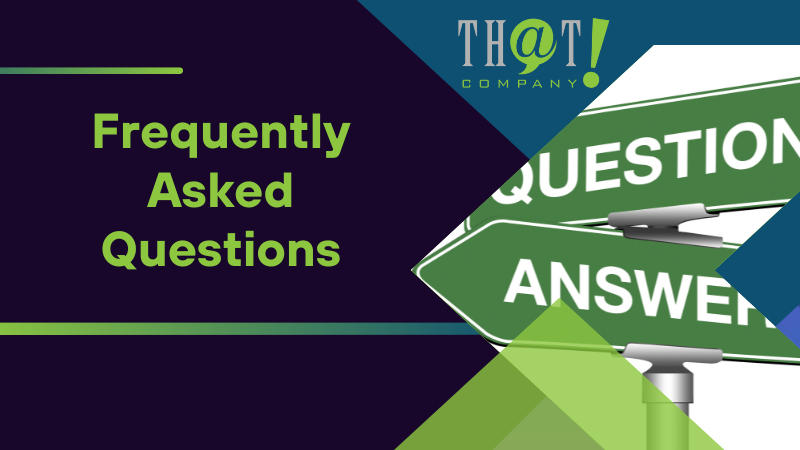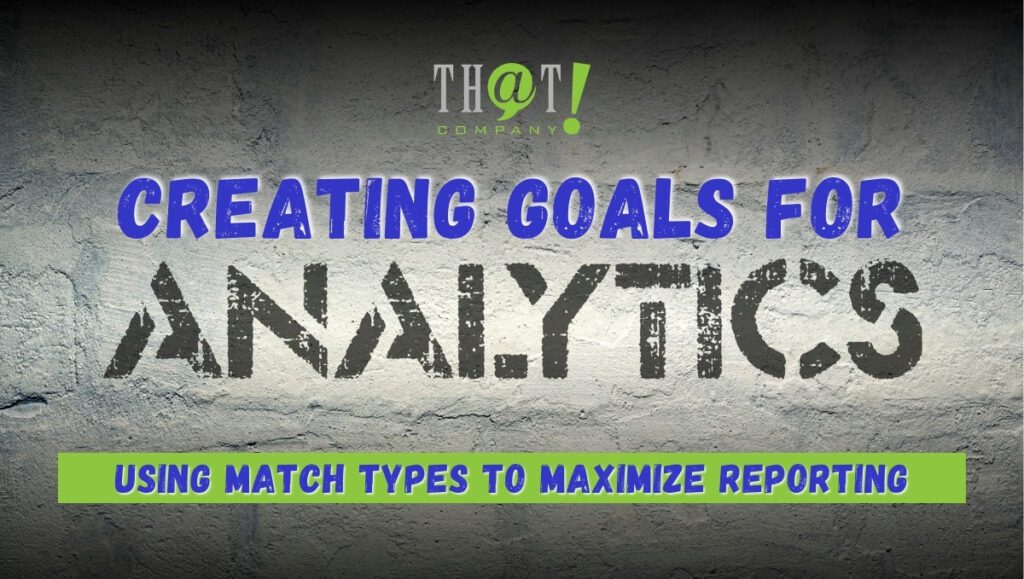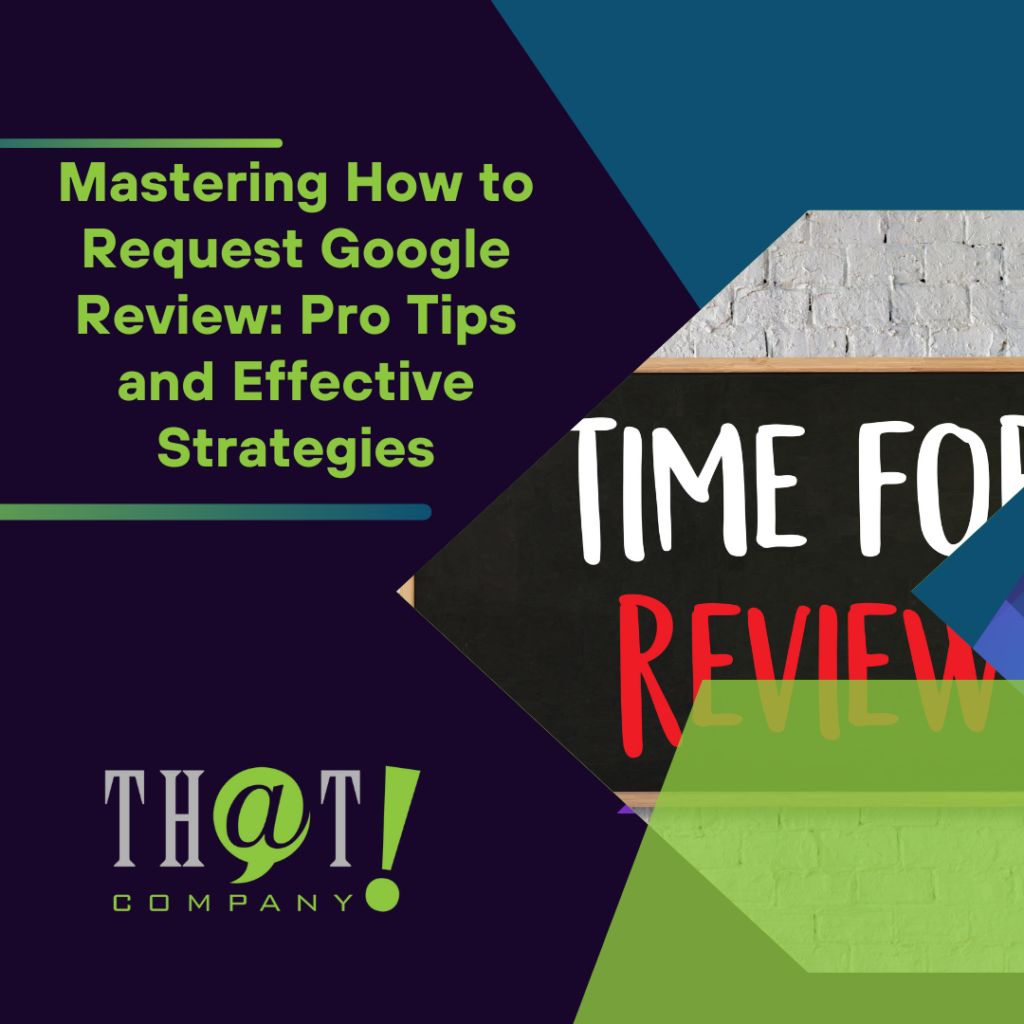
If you’re aiming to climb the search engine ranks, starting with a detailed SEO technical audit is crucial. Exploring key technical aspects like server response times and search engine crawler access, an audit can significantly influence your site’s online visibility. This step-by-step guide offers you clear, actionable strategies to conduct an SEO technical audit, pinpoint crucial issues, and enhance your website’s ranking potential.
Key Takeaways
- Technical SEO audits are vital for understanding and improving backend elements crucial for search engine crawling and indexing, emphasizing the shift toward user experience and search intent in SEO strategies.
- Performing a technical SEO audit involves initial assessments of site health, diagnosing issues that hinder search engine visibility, streamlining site structure, bolstering on-site SEO elements, and ensuring site performance aligns with user experience.
- That! Company specializes in technical SEO audits, offering customized solutions, white label services, and comprehensive support to enhance agencies’ client SEO performance and expand their service offerings.

Unveiling the Core of SEO Technical Audits
The clockwork behind your website’s performance and its visibility on search engine results pages is intricate, and at its heart lies the mechanism of a technical SEO audit. An audit that’s not just about combing through your website for improvements. It’s a deep dive into the core of your site’s DNA, unearthing the blueprint of its performance in the grand scheme of search engines’ evolving algorithms.
At the root of a technical SEO audit lies the understanding of your website’s backend elements, such as server response times and structured data. These are the hidden gears that keep your website running smoothly on the surface. It’s like looking under the hood of a car, beyond the shiny exterior, to understand how well it’s truly running. But why is this important?
The answer lies in the shifting sands of SEO strategies. Today, search engines focus more on user experience and search intent, moving away from mere keyword matching. This shift calls for websites to align with these best practices, making technical SEO audits the compass guiding this alignment. After all, issues such as site speed performance and accessibility to search engine crawlers, though not immediately visible, are critical for SEO, highlighting the importance of technical audits.
The Essence of a Technical SEO Audit
Technical SEO audits, also known as technical site audit, are the flashlight in the dark, complex maze of a website’s infrastructure. They shine a light on the technical aspects that influence how search engines crawl, understand, and index your site.
This type of audit is akin to a health check-up for your website, focusing on the technical infrastructure crucial for search engine crawling and indexing. It goes beyond the realm of content or user experience (UX) aspects, digging deep into the unseen issues that could be impeding your website’s performance on search engine results pages.
It’s about uncovering these hidden issues, bringing them to light, and devising a roadmap to navigate through them for optimal SEO performance.
The Role of Technical SEO in Search Rankings
In the grand stage of search engine rankings, Technical SEO plays a pivotal role. Indeed, it’s the invisible force that ensures search engines can accurately rank your site for important keywords. To perform technical SEO effectively, think of it as the backstage crew in a theater production, quietly working behind the scenes to ensure everything runs smoothly for the main act — your website.
The essence of Technical SEO lies in two fundamental processes – crawling and indexing. Crawling is the process by which a search engine is able to access and navigate through the content of a web page. This allows the search engine to gather information and index the page for search results. Think of it as a search engine’s journey through your website, navigating through its various pages. Indexing, on the other hand, is the process by which search engines add these web pages into their database for retrieval in response to relevant search queries. Essentially, to facilitate this indexing process, it is imperative for your website links to be crawlable by search engines. After all, if your pages are not indexed, they’re invisible to search engines, reducing your website’s overall visibility.
Why That! Company Is the Go-To for Technical SEO Audits
Navigating the complex landscape of technical SEO audits requires expertise, experience, and a deep understanding of the evolving algorithms of search engines. That’s where That! Company comes in. Recognized as one of the leading technical SEO agencies, That! Company has carved a niche for itself in the domain of technical SEO audits.
With a strategic and bespoke approach tailored to the unique requirements of each client, That! Company’s SEO audit services truly stand out in the crowd. Specifically, they specialize in identifying and resolving hard-to-detect issues that affect search engine rankings. As a result, they provide comprehensive technical SEO audits, which are an integral part of their extensive SEO services.

Diagnosing Site Health: Starting Your SEO Technical Audit
Embarking on the journey of a technical SEO audit involves a crucial first step – assessing the overall health of your website. Much like a health check-up, this involves grading the health of your website from 0 to 100, providing a comparison with other websites in the industry. But what does this process entail?
The journey to starting a technical SEO audit is like setting off on a voyage of discovery. You start by setting up the Site Auditor and determining the appropriate crawl settings for a comprehensive analysis. This lays the groundwork for your audit, like setting up the compass on your voyage. Next, you dive deep into the heart of your website to identify any critical issues. These could be 4xx status codes that lead to broken internal pages, negatively impacting ‘link equity’ and user experience.
Along the way, you also make use of various tools to aid your journey. Tools like Google Search Console and MozBar are your trusty companions, helping you check indexability, while an XML sitemap assists search engines in indexing all your site pages. It’s about ensuring that every nook and cranny of your website is visible to search engines, contributing to the better understanding of your site’s visibility.
Initiating a Crawl Report
Unveiling potential issues that affect search engine indexing and user accessibility starts with one crucial step – initiating a crawl report. This step is like lighting up the dark corners of your website, revealing the hidden issues that might be lurking beneath the surface.
To initiate a crawl report, you need to:
- Create a campaign for the website in question. This includes tracking metrics and running site audits.
- Ensure that the Site Auditor integration is enabled within your chosen tool.
- Configure the relevant crawl settings.
- Establish the frequency for automated audits.
Essentially, you’re setting up your toolbox, ready to delve into the heart of your website.
A complete website crawl identifies any obstacles that might prevent search engines from properly indexing your site. It’s about understanding your crawl budget, which dictates how many pages and how quickly a search engine crawls your site.
Evaluating Indexation Metrics
Once you’ve initiated a crawl report, the next step on your technical SEO audit journey is to evaluate indexation metrics. This step ensures that search engines are accessing, understanding, and storing your site’s content appropriately.
The Coverage report in Google Search Console is your guide during this step, providing detailed insights about the pages that are indexed, those with warnings and those excluded, along with reasons for exclusion. It’s about shining a light on each page of your website, ensuring they’re visible to search engines. After all, if your pages are not indexed, they’re invisible to search engines, reducing your website’s overall visibility.
To check a URL’s indexation status quickly, you can perform a ‘site:’ search using Google or other search engines, or use Google Search Console’s ‘Inspect URL’ feature.
Identifying Critical Errors
In the complex world of SEO, there are numerous technical issues that can affect your website’s performance. Over 40 technical issues to be precise, making it essential to have a systematic way of identifying and dealing with them.
The Ahrefs audit tool is your trusty companion in this step. It scans your website and produces an in-depth report, laying the groundwork for prioritizing on-site issues by their importance and impact on SEO. This report highlights vital categories like the 3XX, 4XX, and 5XX HTTP status codes, indicating areas that require special attention due to their potential negative impact on SEO performance.
Once these critical errors are identified, the next step is to sort and address these issues, demonstrating quick and effective results to clients.

Enhancing Search Engine Accessibility
Once you’ve identified the critical errors on your website, the next step on your technical SEO audit journey is to enhance search engine accessibility. This step is about optimizing the robots.txt files, XML sitemaps, and site structure for better accessibility by search engines.
The robots.txt file is like a guide for search engines, directing them on which pages of your website should or shouldn’t be crawled. It’s about preventing unwanted indexing or non-indexing of pages, ensuring that only the relevant pages are visible to search engines.
Optimizing the sitemap is another crucial step in this journey. It’s about ensuring that search engines can efficiently index all the important pages of your website, enhancing your site’s search visibility. This step is also about adhering to web standards like the W3C guidelines, facilitating better interpretation and navigation by search engine crawlers.
Scrutinizing Robots.txt File
The robots.txt file plays a crucial role in your technical SEO audit journey. It’s like a guidebook for search engines, directing them on which parts of your website to visit and which to avoid. Regularly auditing and updating your robots.txt file is essential to ensure that it aligns with your current SEO strategies and maintains its efficacy. It’s about striking a balance between guiding search engines and ensuring your website’s relevant content is visible. Excessive use of ‘Disallow’ in robots.txt can prevent important content from being indexed, necessitating prudent use of this directive.
When dealing with complex site structures, managing robots.txt requires a well-planned strategy to ensure that search engines index high-priority pages.
Mastering XML Sitemap Optimization
Once you’ve optimized your robots.txt file, the next step on your technical SEO audit journey is to master XML sitemap optimization. An XML sitemap is like a roadmap of your website, guiding search engines to all the important pages.
Reviewing and optimizing your XML sitemap ensures that all the pages you want to rank are included, and any undesired pages are excluded. By submitting your XML sitemap directly to search engines, you increase your website’s visibility and gain access to specific reports from Google.
It’s about simplifying the discovery process for search engines and assisting with more efficient crawling and ranking.
Streamlining Site Structure
The structure of your website is like the architecture of a house. It needs to be clear and user-friendly for both the residents (users) and the visitors (search engines) to navigate the entire site with ease.
A structured site enhances the user experience and enables the efficient flow of link equity. The URL structure should reflect the website’s hierarchy, aiding in the site’s overall organization and SEO. It’s about avoiding unnecessary crawling and indexing by search engines and addressing redirect chains to maintain link equity and minimize crawling issues.
It’s essentially about creating a seamless journey for both users and search engines, ensuring a smooth and efficient navigation through your website.

Bolstering On-Site Elements
Once you’ve streamlined your site structure, the next step in your technical SEO audit journey is to bolster on-site elements. This step is about perfecting meta descriptions, leveraging structured data, and optimizing internal linking.
Well-crafted meta descriptions can boost your click-through rates, especially since Google sometimes uses them in search results. Like a movie trailer, they give potential visitors a sneak peek of what to expect on your website, enticing them to click and explore further.
Structured data assists search engines in understanding the context of your content, which can enhance search visibility. As a result, it may contribute to improving your website’s performance on search engines. It’s like giving search engines a detailed synopsis of your content, helping them understand what your page is about.
Strengthening internal linking has several benefits. It helps distribute link equity and facilitates navigation, while also aiding search engines in understanding your content and structure. It’s about creating a network of interlinked pages, ensuring a smooth navigation experience for both users and search engines.
Perfecting Meta Descriptions and Title Tags
Perfecting meta descriptions and title tags is a crucial step in bolstering on-site elements. They’re like the title and summary of a book, informing search engines and users about the content of a page.
Title tags should:
- Contain 50-60 characters to ensure they are appropriately displayed in search results and avoid being truncated
- Avoid keyword stuffing
- Maintain uniqueness, enabling better differentiation of content and clear signaling of the page’s unique value.
On the other hand, meta descriptions:
- Act as an HTML attribute
- Offer a concise explanation of a page’s contents
- May appear as a snippet beneath the title tag on SERPs, giving users additional context.
Leveraging Structured Data
Once you’ve perfected your meta descriptions and title tags, the next step is to leverage structured data. Structured data is deployed in a specific code format, offering additional content information to search engines.
Schema markup, for instance, facilitates search engines in indexing and categorizing pages accurately. Implementing structured data can lead to improved indexing and potentially richer search result features. It’s about giving search engines a comprehensive understanding of your content, ensuring your website shines in the spotlight of search results.
Optimizing Internal Linking
Internal links are like the threads that weave the fabric of your website together, while internal and external links both play a crucial role in site structure. They link one page to another within your domain, essential for the ease of finding content for search engines and users. With internal links pointing from one page to another, they create a cohesive structure that benefits both search engines and users.
To improve site structure and ensure equitable distribution of link equity, follow these tips:
- Fix broken internal links that point to pages that no longer exist.
- Use descriptive anchor text for links.
- Manage the number of links on a page.
- Avoid devalued sitewide links.
Reviewing individual page performance should include analyzing SEO metrics such as page score, page depth, inlinks, and status codes.

Elevating Site Performance and User Experience
Once you’ve optimized internal linking, the next step in your technical SEO audit journey is to elevate site performance and user experience. This step is about accelerating page speed, ensuring mobile responsiveness, and stabilizing visual layouts.
Site speed is crucial for SEO because it affects bounce rates and is recognized as a ranking factor, directly impacting user interactions and website performance on search engine results pages. Meanwhile, ensuring mobile-friendliness is essential due to the majority of web traffic occurring on mobile devices and Google’s adoption of mobile-first indexing.
Accelerating Page Speed
Good Core Web Vitals scores are essential for impacting page rankings and determining user experience quality. It’s like the speed of a website, affecting how quickly users can access and interact with your content.
Improving Largest Contentful Paint (LCP) and First Input Delay (FID) are crucial for enhancing user experience, with targets of under 2.5 seconds and under 100 milliseconds, respectively. Page speed can be improved by minimizing CSS and JavaScript, enabling browser caching, and assessing site performance with tools like Google’s PageSpeed Insights.
Ensuring Mobile Responsiveness
Ensuring mobile-friendliness is essential due to the majority of web traffic occurring on mobile devices and Google’s adoption of mobile-first indexing. It’s about providing a seamless user experience on all devices, maintaining your website’s visibility and usability.
Google Search Console’s ‘Mobile Usability’ report and Google’s Mobile-Friendly Test can be used to evaluate and address mobile usability issues. Prioritizing responsiveness is key to providing a seamless experience on mobile devices, in line with Google’s mobile-first indexing strategy.
Stabilizing Visual Layouts
Cumulative Layout Shift (CLS) measures visual stability, aiming for an ideal threshold score of 0.1 or less. It’s like the stability of a building, ensuring a stable and consistent user experience without frustrating shifts in content.
To provide a stable browsing experience, it’s essential to maintain a CLS score of 0.1 or less by reducing unexpected layout shifts. It’s about ensuring your website’s layout remains stable and consistent, providing a smooth and seamless user experience.

Securing Your Online Presence
Once you’ve ensured a stable visual layout, the next step on your technical SEO audit journey is to secure your online presence. This step involves implementing HTTPS and addressing security vulnerabilities.
HTTPS is a Google ranking signal that ensures the security of data transmission and confirms a site is legitimate and trusted by users. It’s the padlock on your website, ensuring your users feel safe and secure while browsing your website.
On the other hand, addressing security vulnerabilities is crucial for maintaining a reputable standing in the digital environment. It’s about building a fortress around your website, protecting it from any potential threats and attacks.
Transitioning to HTTPS
Transitioning to HTTPS requires installing an SSL/TLS certificate, setting up a sitewide 301 redirect from HTTP to HTTPS, and resolving any protocol implementation issues. It’s about securing your website, ensuring the safe transmission of data, and enhancing user trust and data security.
After adopting HTTPS, it’s crucial to check that internal site content like links, images, stylesheets, and scripts are served over HTTPS and to establish proper 301 redirects for consistency and security. It’s about ensuring the entire website is secure, providing a safe browsing experience for your users.
Addressing Vulnerabilities
Addressing vulnerabilities is a crucial step in securing your online presence. This involves identifying and addressing any potential threats or attacks that could affect your website’s SEO performance.
Critical issues such as 5XX server errors and 4XX client errors should be fixed immediately after discovery to provide immediate SEO gains. It’s about maintaining a strong defense against any potential threats, ensuring your website remains safe and secure.

Resolving Duplicate Content and Canonical Issues
Once you’ve secured your online presence, the next step on your technical SEO audit journey is to resolve duplicate content and canonical issues. Duplicate content occurs when there are multiple webpages with the same or very similar content, which can negatively impact search engine rankings. It’s important to ensure that each page on a website offers unique and valuable information for users..
You can find duplicate content issues in a site audit by following these steps:
- Go to Site Audit > Reports > Duplicates > Issues.
- This is where you can identify and address any duplicate content problems on your website.
- It’s about ensuring each page of your website is unique, avoiding any potential confusion for search engines.
On the other hand, canonical tags should be properly implemented to indicate the preferred version of similar or duplicate pages. It’s about guiding search engines to the right version of your page, ensuring they index the correct version.
Detecting and Eliminating Duplicate Pages
Detecting and eliminating duplicate pages is a critical step in resolving duplicate content issues. Having multiple versions of a website can negatively impact the site’s SEO ranking.
To verify important content is indexed and spot duplicates, one can examine Google’s cache of the URL or use tools like MozBar. Near duplicate pages should be manually reviewed to determine whether they should be removed, consolidated, or improved to avoid SEO ranking issues.
Implementing Correct Canonical Tags
Implementing correct canonical tags is a crucial step in resolving canonical issues. All URLs should have a canonical tag to define a preferred version and avoid confusion by search engines when duplicate or similar content is present.
It’s about guiding search engines to the right version of your page, ensuring they index the correct version. This step is crucial for maintaining a clear and consistent website structure, ensuring a smooth navigation experience for both users and search engines.

Advanced Analysis: Log File and Backlink Profile Review
Once you’ve resolved duplicate content and canonical issues, the next step on your technical SEO audit journey is to conduct an advanced analysis. This involves a log file and backlink profile review.
A log file analysis can:
- Identify errors obstructing Googlebot’s crawling efforts
- Inform strategies to correct these issues, such as utilizing google analytics
- Dive deeper into your website’s performance
- Identify any potential roadblocks that might be hindering its visibility on search engines.
On the other hand, a backlink profile review involves:
- Assessing the quality of backlinks to your website
- Evaluating the strength and quality of the links leading to your website
- Ensuring they contribute positively to your SEO performance.
Conducting Log File Analysis
Conducting a log file analysis involves assessing the behavior of search engine crawlers, identifying any potential problems or opportunities for optimization. It’s like conducting a thorough check-up of your website’s performance, uncovering any potential issues that might be lurking beneath the surface.
The data contained in log files includes the URL path, query string, user agent, IP address, timestamp, request type, and the status code of the server’s response. Analyzing log files involves collecting and filtering the data, parsing it into a readable format, and then analyzing it for issues and opportunities.
Examining Backlink Quality
Examining backlink quality involves:
- Assessing the strength and quality of the links leading to your website
- Evaluating the strength and quality of the links leading to your website
- Ensuring they contribute positively to your SEO performance
External links, also known as hyperlinks to other domains, are essential for backing up sources, enhancing user value, and building credibility with visitors and search engines. Issues with external links can affect a website negatively, and such issues can be identified in the audit report under ‘Site Audit > All issues > Links to other websites’.

International SEO Considerations
Once you’ve conducted an advanced analysis, the next step on your technical SEO audit journey is to consider international SEO. This involves managing hreflang tags and implementing geo-targeting and local SEO strategies.
When targeting an international audience, it’s crucial to select an appropriate URL structure, such as ccTLDs, subdomains, or subfolders, and avoid parameterized URLs to optimize for search engine rankings across different countries. It’s about reaching out to a global audience, ensuring your website is accessible and visible to users across the globe.
Managing Hreflang Tags for Multilingual Sites
Managing hreflang tags is a critical step in international SEO. These tags help indicate to search engines the specific regional and language audience that a webpage is intended for.
For optimal user experience in local SEO, prompting users to manually select their desired regional or language version of the site is preferable over automatic redirection based on IP addresses or cookies. This approach not only gives users more control but also enhances the overall browsing experience. Additionally, hreflang tags must be self-referential and bi-directional, linking each page back to the original and referencing alternate language and region versions, ensuring accurate indexing by search engines.
It’s about providing a localized user experience, ensuring your website caters to users from different regions and languages.
Geo-Targeting and Local SEO Strategies
Geo-targeting and local SEO strategies are also crucial for international SEO. Some key practices for incorporating geographic terms into title tags include:
- Clarifying a business’s location for both users and search engines
- Using specific city or region names in title tags
- Including relevant keywords related to the business’s location
These practices are critical for local SEO and can help improve a business’s visibility in specific geographic areas.
For optimal user experience in local SEO, prompting users to manually select their desired regional or language version of the site is preferable over automatic redirection based on IP addresses or cookies. It’s about catering to local users, ensuring your website is visible and accessible to users in specific geographic locations.

The Agency That Other Agencies Use: Leveraging That! Company’s Expertise
After all the steps in your technical SEO audit journey, the final step is to leverage the expertise of That! Company. Recognized as “The Agency That Other Agencies Use,” That! Company has established a remarkable reputation over nearly 15 years, signifying its depth of experience and authority in the SEO domain.
That! Company offers white-labeling capabilities for SEO reports and marketing dashboards, enabling agencies to present technical milestones directly under their own brand identity. It’s about working hand-in-hand with agencies, providing them with the tools and expertise to enhance their clients’ SEO performance.
Customized Solutions for Every Client
That! Company’s SEO case studies highlight its ability to develop bespoke strategies tailored to the unique challenges of different brands. It’s about understanding the unique needs of each client and devising strategies that cater specifically to these needs.
By conducting thorough technical SEO audits, That! Company identifies key website architecture issues that offer agencies opportunities to upsell additional SEO services. It’s about providing agencies with the ability to not only enhance their clients’ SEO performance but also to create avenues for service expansion and client growth.
Through its white label SEO services, That! Company empowers agencies with expert-level SEO solutions delivered under their own brand. These services include in-depth keyword research, on-page and off-page optimization, technical SEO improvements, and link-building strategies. With a dedicated team managing SEO campaigns behind the scenes, agencies can confidently offer high-quality services, scale their business, and strengthen client relationships—without needing to hire an in-house SEO team.
Comprehensive Support and White Label Services
That! Company offers comprehensive support services and white label solutions that maintain agency branding. It’s about providing agencies with the support and services they need, without compromising their brand identity.
That! Company actively works to expand the services agencies offer to their clients, filling in gaps and referring clients back to the partners for services like PPC or web design. It’s about helping agencies expand their services and grow their client base, providing a comprehensive solution for all their SEO needs.
Collaborative Success Stories
Multiple agencies have shared testimonials about the success and improvements they’ve experienced after partnering with That! Company for SEO audits and strategies. In fact, these success stories underscore the positive impact of collaborating with That! Company, effectively showcasing their expertise and the value of their technical SEO audits.
Agencies have achieved significant SEO success by collaborating with That! Company, leveraging their expertise in technical audits and SEO strategies. It’s about forming a successful partnership, achieving remarkable results together, and paving the way for a successful future.

Summary
Mastering your SEO technical audit involves a journey through various steps, each crucial in ensuring your website’s optimal performance and visibility. From understanding the core of SEO technical audits to bolstering on-site elements, securing your online presence, and leveraging the expertise of That! Company, each step contributes to the overall SEO performance of your website. So, are you ready to embark on this journey and master your SEO technical audit?
Partnering with a white label digital marketing agency like That! Company can provide the expertise and resources needed to enhance your agency’s service offerings. With specialized teams handling SEO, PPC, social media management, and content marketing, agencies can expand their capabilities without the overhead of hiring an in-house team. By utilizing white-label solutions, businesses can maintain their brand identity while delivering top-tier digital marketing services, ensuring long-term success and client satisfaction in a competitive online landscape.

Frequently Asked Questions
Why is a technical SEO audit necessary?
A technical SEO audit is essential to ensure high visibility and peak performance of a website over time, adapting to search engines’ evolving algorithms.
What is the role of a technical SEO audit in search rankings?
A technical SEO audit plays a critical role in improving a website’s search rankings by ensuring that search engines can properly assess and rank the site for relevant keywords.
How does That! Company conduct a technical SEO audit?
That! Company conducts a technical SEO audit by setting up the Site Auditor, determining crawl settings, conducting a crawl report, evaluating indexation metrics, and identifying critical errors to ensure comprehensive analysis and optimization of the website.
How does That! Company enhance search engine accessibility?
That! Company enhances search engine accessibility by optimizing robots.txt files, XML sitemaps, and site structure, which helps improve the visibility and indexing of their website on search engines.
How does That! Company secure a website’s online presence?
That! Company secures a website’s online presence by implementing HTTPS and addressing security vulnerabilities, which helps protect sensitive information and build trust with visitors.

























